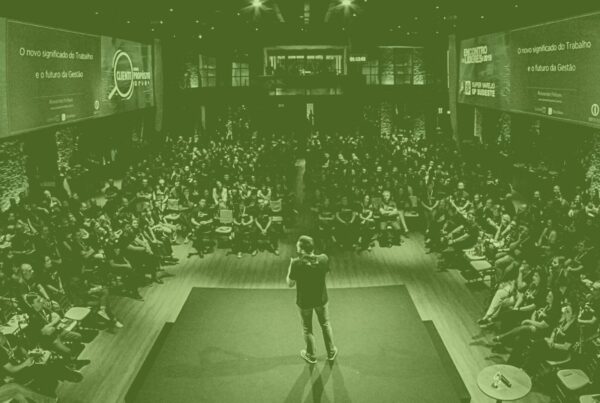The final step in the event management process is a follow-up meeting after the event to discuss the event’s overall ROI, attendee and sponsor feedback, and make the necessary readjustments to the overarching event strategy. Debrief meetings are also a great opportunity to celebrate the event’s success, boosting the morale of your team.
Event professionals have to come to follow-up meetings after events well-prepared. Collect all your pre- and post-event survey responses, talk to everybody involved in the event planning process, and get your reports ready.
In this blog post, we will explore why you need to have follow-up meetings, followed by what to do during those meetings and how to organize them to get the greatest impact.
Why You Need A Follow-Up Meeting After Events
- Celebrate (and replicate) success. All too often, we forget to acknowledge all the hard work everyone did during the event. It doesn’t have to be a huge bash, but a small amount of recognition can go a long way towards energizing your team for the next event. TIP: use the meeting as vacation and get your team to unwind at the same time.
- Discover ways to improve. The events industry is competitive. One-upping your own events is the mantra of most top professionals. Beyond pointing at your event’s mishaps, focus on discovering ways to improve your attendee and client experiences.
- Collect valuable event data. The experience of an event is often a fleeting one. If you want to truly discover ways to improve your event, you need to collect new data straight from your team, attendees, and vendors while it’s fresh in their minds.
- Start planning. Let’s not forget the main reason to debrief: getting a head start on your next event. Tempting as it can be to take a well-deserved time off, just hold it off for another day for a small huddle. It’s rare to get everyone on your team on the same site, so don’t waste it and start your pre-event planning right after.
Survey Your Audience To Get Post-Event Feedback
Getting feedback is probably the most important thing you need to do during your follow-up meeting after events. It’s the fuel you’ll need to improve your future events, as well as a way to maintain a connection with your audience.
But if you’ve ever attended an event yourself, you’ll know that getting feedback isn’t all that easy. People want to just enjoy the event, not answer some boring form. To help out, here are a few ways to encourage attendees to provide their feedback:
1. Start with a goal. Your post-event survey needs to be helpful in driving improvements in your future events. To do that, you need to set a goal for the survey. What do you need to learn from attendees? What do you want to change? Ideally, survey responses should be used to measure your event KPIs. From there, you can formulate a few focused questions that when answered, will give you a clearer direction to take for the next events.
2. Ask only what’s needed. Let’s face it: we all hate answering surveys. Don’t bury the attendee under a mountain of questions. Cherry-pick the most important ones and make sure answering them is easy for them. Ask three questions instead of 10. Give them three multiple-choice options instead of five. Limit answers to one sentence instead of giving them a blank sheet to fill out.
3. Add tough questions. You should ask questions that will be tough to swallow for you and your team, instead of tough-to-answer questions. If you think your topics were boring, ask them why. If you had a huge tech issue, talk about it upfront and ask for the attendee’s experience. It might be a bitter pill to swallow, but getting frank and pointed feedback is important to both make your participants feel that they’re heard. It gives you guidance on how to do better next time.
4. Incentivize the survey. If you worry that you won’t get enough survey responses, incentivize participation by giving out a reward (i.e. free ticket to your next in-person event).
Where To Collect Attendee Feedback?
- Onsite polls. The fastest and easiest way to survey your audience is during the event itself. You can get the host or speaker to do a show of hands, or ask people to use your hashtag to send questions. You can also include the feedback form right in their meeting packet, with a small incentive for them to complete it and hand it back to your team.
- Event apps. If your crowd is tech-inclined, you can add the survey to the event app you are using. This ensures that you get the responses quickly as well as have the ability to run analytics on it.
- Social media. Using Facebook or Twitter to collect answers is a good way to collect responses since almost everyone uses them. On top of that, public answers also encourage others to chime in, though be aware that this might lead to a bit of groupthink when it comes to suggestions and comments.
- Emailed forms. Another way to gather feedback is straight from your attendee’s inbox, especially for business events. Try sending the survey using your own email rather than a generic one to get more responses. If possible, allow them to answer the form right in their inbox.
- Chatbots. With everyone glued to one form of chat or another, it’s worth sending your feedback questions over chat as well. To help you with the responses, you can even employ chatbots who can do the back-and-forth for you.
Follow-up Event Surveys For Attendees
Remember, when drafting your post-event survey, make sure that the feedback will help you measure the overall success of your event. Here are some of the most common questions that you can discuss at the follow-up meeting after your event:
- How satisfied were you with the event? (on a scale of 1-5)
- How likely are you to recommend our events to your colleagues? (on a scale of 1-5)
- How likely are you to return to our events? (on a scale of 1-5)
- How did you hear about our event? (open-ended question)
- What did you like/dislike the most about the event? (open-ended question)
- How satisfied were you with speakers/content/networking opportunities? (open-ended question)
Collect Feedback From Your Event Staff
Let your staff know ahead of time that you’ll be asking for their feedback on a few things post-event. Give them your questions before the event so that as it progresses, they can observe and take notes for later. Don’t forget to include your vendors in this exercise as well, especially if they are also present during the event.
As for the questions, you can start with the basics and build upon them:
- What went well? Begin with your successes. These can be achievements for the event as a whole, like hitting all-time high numbers of certain metrics. It can also be individual accomplishments like exemplary service from a team member. Don’t forget to also praise those who did work behind the scenes like planners, producers, and assistants.
- What was missing? Since your team is close to the action, they’ll know firsthand the things attendees wanted that you didn’t deliver well. Your audience might have expected something like a certain topic or a small creature comfort that you sadly lacked. Or it can also be some missing support for your staff like lack of supplies or time to prepare.
- What went wrong? You can’t avoid mishaps during events but you can prepare for them. Even if something went wrong, assure everyone that it’s not about blaming but about mitigating the problem if it ever happens again in the future.
- Did we hit our objectives? You set out goals for your event during the planning stage and now is the time to see if they bore fruit. This is also the time to find out why you got those numbers and if the factors were under your control, as well as how to consistently exceed them.
- How to increase ROI? It’s always valuable asking how to improve your event ROI. Ask for suggestions that not only increase revenue but also boost other metrics, especially engagement. How do we boost interactivity for the event? Did we promote to the right audience for the event?
Post-Event Debrief Questions For Sponsors
Building long-term sponsor relationships means taking the necessary time after the event to ensure whether sponsors had a positive experience and that the event was a profitable investment for them.
- How valuable was this event for your brand?
- Did the event meet your expectations about lead generation?
- How pleased were you with this sponsorship opportunity in general?
If they were let down by your event, offer actionable solutions to make your sponsors whole. Thanks to event technology and the community marketing model, you can expose your audience to sponsored content all year round rather than just at one in-person event.
Check Your Event ROI
In essence, follow-up meetings after events are dedicated to discussing whether marketers hit their event goals and whether the event yielded a positive ROI.
First, look at your financials. Did you stick to the event budget you planned for or did you pay for some unaccounted surprise expenses? It can’t help if you’ve suddenly found yourself short-staffed or needing extra equipment on site. While sometimes you really can’t avoid these expenses, it’s best to have an emergency fund just for these things.
Maybe you actually hit your budget numbers and have a few dollars left over. Good for you! Now is the time to find out where you got those savings and if the quality you got in return wasn’t compromised. It’s worthwhile to take note of these deals as well so you can use these vendors next time.
Next, if your event generated revenue, how much did you make? Was it better or worse than last year, in absolute dollars? What were the big revenue earners this time around? Don’t forget that revenue doesn’t just mean entrance fees and purchases. It’s also how many sponsorships and advertisers you were able to get.
Finally, figure out the revenue per attendee, if your event’s goal was to generate income. Compare it to past numbers as well as industry values. Are you hitting benchmarks or falling short? And what should you do to increase this number?
Next, look at your engagement numbers. Each event has its own goal but one thing in common among them is that they all want to create a highly-engaged audience. There are a few ways to measure engagement for your event:
- Online mentions. From ephemeral hashtags to lead-generating backlinks, you need to measure all these types of mentions of your brand, event name, products, and so on. It shows a strong signal that people like your event enough to write about it in public and be associated with it. It also means they want to continue the conversation, further boosting your event’s brand and online engagement.
- Net promoter score. The next best thing to actual mentions is the potential of your attendees to refer to your products or services. This simple tool can be embedded into your event app or printed as part of your feedback form to determine how likely someone is to refer your event or products promoted within.
- Conversion funnel. A combination of many metrics, your conversion rate simply visualizes how many people move from each step of their event journey. How many visitors to your event page turned into sign-ups? Of those, how many actually went to the event? You can even count the number of people who became customers to close the loop.
- Audience numbers. Of course, we would be remiss if we forgot to measure the number of people who attended the event. We put this in last though since each event has its own target number. The important thing is that you get more people coming in while increasing all the other numbers above.
- Platform analytics. Event platforms can spit out various data reports, such as session watch duration, live polling response rate, average speaker rating, posts per discussion forum, etc. It is much easier to track engagement at virtual events than in-person, but as platforms move towards year-round community spaces, the engagement will stretch out far beyond the in-person event itself.
Continue The Conversation After The Debrief Meeting
Events do not need to be a one-off experience for your attendees. Staying in touch with your audience not only gives them bonus value out of their experience but also primes them to return to your events.
Here are some activities you can do to keep people in the loop:
- Share post-event content on social media. Your event generates a lot of content from video to sound bytes to photos. Sharing these on Facebook, Instagram and Twitter show non-attendees what your events are like. And if you mention attendees, they’ll also feel like they were part of something great and engage back.
- Create a thriving online community. The events industry is fully embracing the digital realm and is moving towards a heavier focus on online communities. This is where your audience lives and communicates year-round. Take the opportunity to market your future events to them and share post-event reels and content.
- Send thank-yous. People spent their time and sometimes even money just to be at your event. It’s just right to thank them for it, so give them a token that will remind them of your event. It can be a physical item like a card or something virtual like an ebook or resource. What’s important is you appreciate them so they remember to come back next time.
- Share “coming soon” posts. You want your next event to be part of your attendee’s calendars so make sure to create a teaser for the next event on your page. You can even ask them to sign up via a Facebook event to gauge their interest.
- Ask them to share their experiences. Ask attendees to share their photos and videos on your feed or get their public feedback and reactions to specific aspects of your event. You can even add prizes if you’d like to encourage them to post. Don’t forget to comment and like those posts to show that you appreciate them!
How To Plan A Follow-Up Meeting After Events
- Set a specific date and location. Treat the meeting as an integral part of your event timeline and add it to the plan for the event. The meeting should be done immediately after the event, if at all possible, so you can capture everyone’s experience while it’s still fresh.
- Only invite who needs to attend. Not everyone needs to be at the follow-up but don’t forget to invite key stakeholders including vendors and clients. For small events, the entire team probably needs to be part of it. For larger ones, you can limit it to leaders, managers, and decision-makers.
- Have an agenda. Like any meeting set an agenda and stick to it. Everyone might be exhausted and having a strict timeline to follow makes the most out of everyone’s time. Also, make sure to send this agenda to everyone as early as possible and assign a facilitator who can move things along so you don’t get stuck.
- Focus on learning. The goal of the meeting is to gather as much insight as possible and address issues. Don’t point fingers but collectively come up with solutions instead.
- Set next steps. The meeting needs to produce some output so make sure everyone knows what they need to do next as a result of their learnings. Remember to document what each person needs to do next in preparation for the next event.
- Recap and celebrate. After summarizing the meeting, it’s important to also use this time to celebrate since everyone’s earned it! Host the meeting at a relaxing getaway and make it part of the agenda to have some leisurely activities that your team enjoys doing.
At Endless Events, we recognize follow-up meetings after events as one of the most important data points for measuring event marketing success. We talk to our clients and ensure they get event feedback from their attendees, sponsors, and other stakeholders. After all, nothing improves the quality of a long-term strategic event relationship like ensuring our event strategies remain flexible and profitable.
Editor’s Note: This blog post was originally published in March 2014 and has been updated for accuracy and comprehensiveness.








